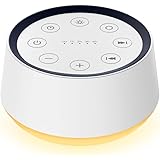Have you ever found yourself lying awake in bed, staring at the ceiling, desperately wishing for sleep to come? The harder you try to relax, the more elusive restful slumber seems to become. This common nocturnal struggle often feels frustrating and exhausting, affecting our energy and focus the following day. Fortunately, practicing a guided meditation for sleep relaxation can gently steer your mind and body towards a deeply peaceful state, exactly as demonstrated in the calming video above.
This powerful technique offers a serene pathway to unwinding after a long day, allowing you to release tension and quiet a busy mind. Instead of battling against sleeplessness, meditation for sleep invites you to simply observe and let go. Consequently, you can cultivate a deep sense of tranquility that naturally ushers in restorative sleep. Let us explore the fundamental principles and practical steps involved in harnessing guided meditation for profound sleep relaxation.
Embracing the Guided Meditation Sleep Talk Down
A guided meditation sleep talk down provides structured support, leading you through specific steps designed to induce relaxation. This process expertly utilizes verbal cues to shift your focus from external distractions and internal anxieties towards a state of inner calm. The objective is not to force sleep but rather to create optimal conditions where sleep can emerge organically and without effort. It is a gentle journey, not a forceful pursuit, that allows your mind to surrender.
The speaker’s soothing voice acts as an anchor, guiding your attention and helping to quiet the incessant chatter of daily thoughts. Furthermore, this method often incorporates elements of progressive muscle relaxation and mindful breathing, which are highly effective tools for physical and mental unwinding. Therefore, by consistently engaging with such a meditation for sleep, you can train your body and mind to respond more readily to relaxation cues. This consistency establishes a beneficial routine that supports overall well-being.
The Power of Deep Breathing for Sleep Relaxation
Deep breathing constitutes a cornerstone of any effective meditation for sleep. The simple act of consciously regulating your breath sends powerful signals to your nervous system, indicating that it is safe to relax. Breathing in deeply through your nose and exhaling slowly through your mouth helps activate the parasympathetic nervous system, responsible for our “rest and digest” response. This deliberate rhythm effectively slows your heart rate and lowers blood pressure, preparing your entire body for slumber.
Focusing on each inhale and exhale provides an immediate anchor for your attention, drawing you away from distracting thoughts. As you exhale, imagine releasing all the accumulated tension and worries of the day, allowing them to dissolve completely. Practicing this breath awareness prior to sleep helps to discharge any residual stress. Consequently, you arrive at a more tranquil state, which is perfectly conducive to restful sleep and deep relaxation.
Navigating Thoughts During Meditation for Sleep
One common misconception about meditation is the idea that you must completely stop thinking. However, as the video thoughtfully explains, it is perfectly normal for thoughts to arise during any meditation practice. We are inherently thinking beings, processing thousands of thoughts each day, so expecting a blank mind is unrealistic. The true skill lies not in suppressing thoughts but in changing your relationship with them.
When thoughts inevitably enter your mind, simply acknowledge their presence without judgment or attachment. Visualize them as clouds passing in the sky or leaves floating down a stream, observing them without feeling the need to follow their trajectory. Gently guide your attention back to the voice of the guided meditation or the sensation of your breath. This practice of observation without attachment trains your mind to gradually quieten, which is crucial for achieving deep sleep relaxation.
Releasing Physical Tension Through Body Scan Meditation
Our bodies often unconsciously hold onto tension accumulated throughout the day due to stress, poor posture, or emotional strain. A systematic body scan is an incredibly effective technique within meditation for sleep, designed to locate and release this stored tightness. This process involves mentally checking in with each part of your body, from your toes all the way up to your head.
Begin by focusing on your feet, noticing any sensations, then gently tensing and releasing the muscles, allowing them to become heavy and relaxed. Progressively move up through your ankles, calves, thighs, hips, and torso, consciously engaging and then softening each muscle group. This intentional act of tensing and releasing helps you become acutely aware of physical discomfort and provides a method to actively let it go. Consequently, a deep sense of physical relaxation permeates your entire being, paving the way for undisturbed sleep.
Creating a Sanctuary for Sleep and Deep Relaxation
Beyond the meditation itself, cultivating an optimal sleep environment significantly enhances the effectiveness of your guided meditation for sleep relaxation. Ensure your sleeping space is dark, quiet, and cool, which are ideal conditions for initiating and maintaining sleep. Prioritize comfort in your bed, making small adjustments to your position to ensure your body feels evenly supported and completely at ease. Eliminate any potential distractions, such as electronic devices, well before bedtime.
Consider incorporating calming elements like soft lighting, aromatherapy with lavender, or a warm bath before beginning your meditation practice. Such rituals signal to your brain that it is time to unwind and prepare for rest. By combining a mindful environment with consistent meditation for sleep, you create a powerful synergy. This combination supports profound relaxation and enables you to slip into a peaceful slumber night after night, transforming your evening routine.








